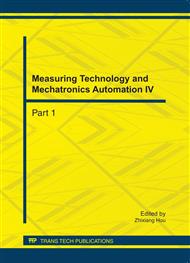p.731
p.735
p.741
p.745
p.749
p.753
p.761
p.765
p.771
Voice Activity Detection with Decision Trees in Noisy Environments
Abstract:
An improved project based on double thresholds method in noisy environments is proposed for robust endpoints detection. Firstly, in this method, the distribution of zero crossing rate (ZCR) on the preprocessed signal is taken into account, and then the speech signal is divided into different parts to obtain appropriate thresholds with decision trees on the basis of the ZCR distribution. Finally, the double thresholds method, focusing on different importance of the energy and ZCR, is taken in the corresponding situation to determine the input segment is speech or non-speech. Simulation results indicate that the proposed method with decision trees obtains more accurate data than the traditional double thresholds method.
Info:
Periodical:
Pages:
749-752
Citation:
Online since:
October 2011
Authors:
Price:
Сopyright:
© 2012 Trans Tech Publications Ltd. All Rights Reserved
Share:
Citation:


